-
 +4 +1
+4 +1Neanderthal genes found for first time in African populations
African populations have been revealed to share Neanderthal ancestry for the first time, in findings that add a new twist to the tale of ancient humans and our closest known relatives.
-
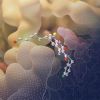 +4 +1
+4 +1Imaging study of key viral structure shows how HIV drugs work at atomic level
Salk scientists have discovered how a powerful class of HIV drugs binds to a key piece of HIV machinery. By solving, for the first time, three-dimensional structures of this complex while different drugs were attached, the researchers showed what makes the therapy so potent. The work, which appeared in Science on January 30, 2020, provides insights that could help design or improve new treatments for HIV.
-
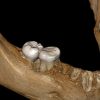 +18 +1
+18 +1A 160,000-year-old jaw from a human ancestor was found in a Tibetan cave. It might explain why Tibetans are able to live at high altitudes today.
Scientists found a 160,000-year-old jawbone from a human ancestor in a Tibetan cave. It might explain why Tibetans today can live at high altitudes.
-
 +20 +1
+20 +1Pentagon warns against military service members using Ancestry, 23andMe kits
Citing the risk of inaccurate or unreliable health results.
-
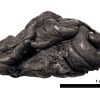 +4 +1
+4 +1Human Genome Recovered From 5,700-Year-Old Chewing Gum
Modern chewing gums, which often contain polyethylene plastic, could stick around for tens or even hundreds of years, and perhaps much longer in the right conditions. Some of the first chewing gums, made of birch tar and other natural substances, have been preserved for thousands of years, including a 5,700-year-old piece of Stone Age gum unearthed in Denmark.
-
 +14 +1
+14 +1A new study shows an animal's lifespan is written in the DNA. For humans, it's 38 years
Knowing an animal's normal lifespan is hugely important for conservation efforts, but it's harder to find out than you'd think.
-
 +18 +1
+18 +1DNA is only one among millions of possible genetic molecules Scientists computed a zoo of millions of alternate genetic polymer molecular structures, giving context for why biology encodes information how it does, and providing potential leads for new dru
Scientists computed a zoo of millions of alternate genetic polymer molecular structures, giving context for why biology encodes information how it does, and providing potential leads for new drugs and a guide to searches for extraterrestrial biology.
-
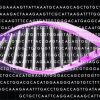 +24 +1
+24 +1New gene editing technology could correct 89% of genetic defects
Scientists have developed a new gene-editing technology that could potentially correct up to 89% of genetic defects, including those that cause diseases like sickle cell anemia.
-
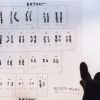 +7 +1
+7 +1It’s Possible to Inherit More DNA From One Parent Than the Other
23andMe’s 4-million-person database reveals how many people are living with undetected chromosomal anomalies.
-
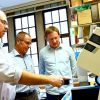 +14 +1
+14 +1Researchers unlock potential to use CRISPR to alter the microbiome
Researchers at Western University have developed a new way to deliver the DNA-editing tool CRISPR-Cas9 into microorganisms in the lab, providing a way to efficiently launch a targeted attack on...
-
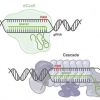 +16 +1
+16 +1New CRISPR Class Expands Genetic Engineering Toolbox
Biomedical engineers at Duke University have used a previously unexplored CRISPR technology to accurately regulate and edit genomes in human cells.
-
 +2 +1
+2 +1Why it's dangerous to liken DNA to computer code
A few days ago, on my way to a discussion in the exquisite little McCrum theatre, which is hidden away in the centre of Cambridge, I had to pass through the courtyard of the Eagle pub in Bene’t Street. As I did so, I suddenly remembered that this is the hostelry where, on 28 February 1953, Francis Crick, rushing in from the nearby Cavendish Lab, announced to astonished lunchers that he and James Watson had discovered the secret of life. (They had just unveiled their double-helix model of the DNA molecule to colleagues in the laboratory; there’s now a blue plaque on the wall marking the moment.)
-
 +19 +1
+19 +1'Lefty DNA' found - and it changes brain structure
Scientists start to chip away at the mystery of why one in 10 people is left-handed.
-
 +15 +1
+15 +1First DNA From This Ancient Civilization Reveals Ancestry of Modern South Asians
Long before climate change drove them to abandon their thriving cities, a group of hunter-gatherers settled in the Indus River Valley as farmers, leading to the creation of one of the world's first large-scale urban societies, complete with booming e
-
 +7 +1
+7 +1The Oldest Parasite DNA Ever Recorded Has Been Found in Prehistoric Puma Poo
he oldest parasite DNA ever recorded has been found in the ancient, desiccated faeces of a puma. A team of scientists made the discovery after studying a coprolite taken from a rock-shelter in the country’s mountainous Catamarca Province, where the remains of now extinct megafauna have previously been recovered in stratigraphic excavations.
-
 +18 +1
+18 +1First Human CRISPR Trial in the US Aims to Cure Inherited Blindness
Gene editing is advancing at a faster pace than most of us can keep up with. One significant recent announcement was gene editing tool CRISPR’s application to non-genetic diseases thanks to a new ability to edit single letters in RNA.
-
 +39 +1
+39 +1Study will test CRISPR gene editing inside the body for first time
Patients are about to be enrolled in the first study to test a gene-editing technique known as CRISPR inside the body to try to cure an inherited form of blindness. People with the disease have normal eyes but lack a gene that converts light into signals to the brain that enable sight.
-
 +4 +1
+4 +1An Epidemic of Disbelief - What new research reveals about sexual predators, and why police fail to catch them
“There is no money better spent than the Justice Department spends here, dollar for dollar,” Tim McGinty said. “I don’t think there will ever be another time in history when so many criminals can be arrested so easily, so quickly, so inexpensively, and with such certainty.”
-
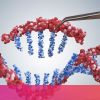 +20 +1
+20 +1CRISPR is less like molecular scissors and more like molecular malware
Last week I read an article about CRISPR, the latest tool scientists are using to edit DNA. It was a great piece – well researched, beautifully written, factually accurate. It covered some of the amazing projects scientist are working on using CRISPR, like bringing animals back from extinction and curing diseases.…
-
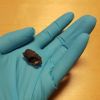 +24 +1
+24 +1Scientists have found 10 000-year-old Scandinavian genes in prehistoric gum
These small lumps of pitch were chewed 10 000 years ago by people living in what is now Sweden. But who were these people?
Submit a link
Start a discussion




















